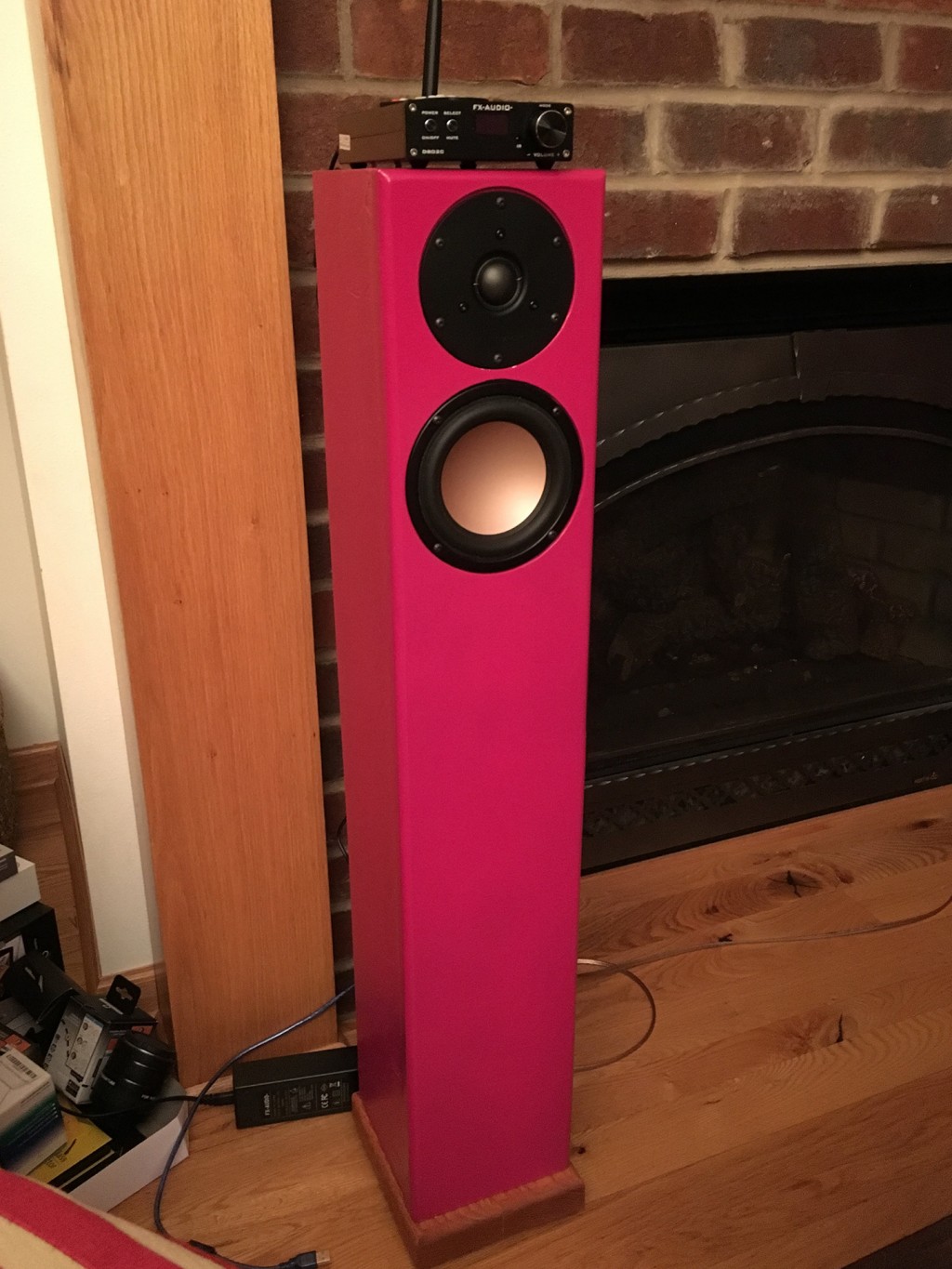
Pink and Gold
Designer:
Antpink
Project Category:
Tower Speakers
Project Level:
Beginner
Project Time:
20+ Hours
Project Cost:
$100 – $500
Project Description:
Wanted floorstanders and figured I could build some – longtime dream, finally realised! Used online calculators for speaker volume, crossover, bass tube and basic carpentry and soldering skills to put it all together. Great learning experience.
Design Goals:
Unique floorstanders that would both look and sound good.
Driver Selection:
HiVi M5N 5″ Midbass #297-417
HiVi Q1R 1-1/8″ Textile Dome Tweeter #297-417
Enclosure Design:
Own design based upon speaker volumes calculated online and recommended by the PE product pages
Enclosure Assembly:
MDF (never again!), cut to size, with speaker cutouts using a router. Wanted to be able to disassemble easily to access drivers, so box design much more complicated than it needs to be.
Crossover Design:
Used the very awesome XSim to select the components and make a custom crossover.
Tips & Tricks:
Keep it simple. My original speaker design was too complex, looked great on paper, but gave many headaches in the actual build process. Have the right tools.
Conclusion:
Won’t use MDF again – too much dust that gets everywhere. My second set will be all wood.
Sounds good but amp specific – FX Audio amp delivers good sound across the whole range, very good mid, decent treble and bass – the M5N is a very good driver I think. Using a home built gainclone (another project) loses quite a bit of the bass.
I learned a lot of how not to do the next set – don’t over complicate the box, it makes it very difficult to build, and get the right tools – long straight edges are difficult (I now have a table saw).
As a learning experience, it taught me a lot – the next one will be better and quicker as a result.
About the Designer:
Complete amateur, general manager by day, family man all other times – hope to teach my kids that there is value in “I made that!”, which makes it fantastic, no matter what.
Project Parts List:

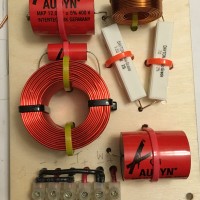
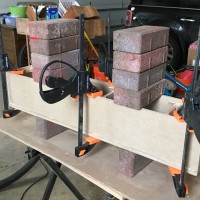
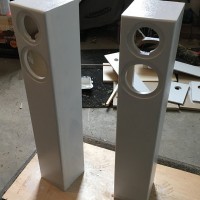
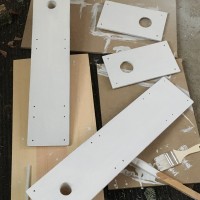
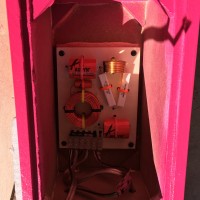
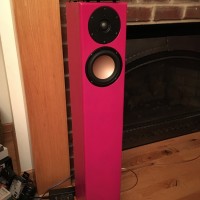
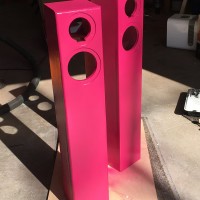
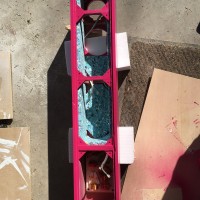
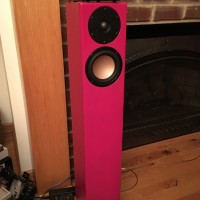
Thanks for sharing, I’m long time lurker, admiring decent production like yours, recently did a project myself, know what that satisfying feeling and learning curve is , congrats!!!
Thanks! Much appreciated
First, the speaker cabinet looks extremely well designed and well built, regardless of what challenges you encountered! It is nicely reinforced, with good utilization of gussets. The paint job appears to be well done too. You should be proud. Well done.
MDF vs. Natural Wood
MDF — is typically the choice wood for speaker cabinets for several reasons. First, cost of course. Second, it is a very dense and does not resonate as easily as natural wood. This means less acoustic energy would be lost to the cabinet and utilized by the drivers vs. a natural wood product. You want the drivers, not the cabinet, to do the resonating. Thirdly, MDF has minimal but consistent expansion in all directions. It is considered dimensionally stable over most interior environments. Natural wood is notorious for expansion in varying humid environments. This is why woodworkers building furniture are extremely vigilant on how they design furniture; because if wood grain is not oriented in the right direction the furniture and joints will self-destruct. That being said, I do build speakers out of natural wood, however, they are always relatively small speakers (and I live in the low humidity environment of Phoenix, AZ).
As far as the MDF dust issue. Yep, MDF can be extremely messy. Working with MDF demands you have sufficient dust extraction in your shop/environment to protect your lungs. This stuff is nasty on your lungs because of the small wood fibers and the chemical bonding agents used to make the darn stuff. Natural wood can be pretty nasty too, especially some of the exotic woods of Africa and South America that are clearly toxic. I have a dust extraction system in my shop to minimize health risks. As an alternative to professional dust extraction you can use a large industrial fan to strategically direct dust away from you while working outside as weather permits. Additionally you should be wearing a NIOSH-approved P96 filtering mask with silicon seal and replaceable filters such as the 3M Paint Project Respirator Mask (models 8271, 8576, 8577). Save your lungs. According to a fellow woodworker friend of mine, older woodworkers are known for higher incidence of lung disease.
Natural Wood – is much prettier, and is more easily finished (in my humble option) than MDF which usually requires a lot of filling and sanding cycles just to get a decent smooth paintable finish. Natural wood on the other hand can be finished many different ways with poly, lacquer, dyes, stains, toasting, texturing, etc. each yielding uniquely different finishes. So wood scores high in ease and beauty of finishing.
One hybrid option I use successfully is to build the speaker cabinet out of MDF but finish the exterior with veneer. If you have a band saw and jointer you can make your own quite cost effectively. Contrary to way some think, veneer is not a “cheap” alternative. Furniture built in the 1700s and 1800s frequently used veneer on fine furniture to conceal the less expensive, but more workable and more stable wood, and with amazing results that still stand the test of time. Finally, I recently built some bookshelf speakers using MDF, but the front baffle was made of solid Curupay from Argentina. I did not however attach it to the enclosure with wood glue or screws. Instead, I used a silicon latex caulking adhesive to allow for some expansion, yet provide a perfect seal for the enclosure, which is not so critical for a ported system. Give that a try if you have some special species of wood you want to show off.
Again, well done. Keep up the good work.
All my best,
David Hall
Phoenix Sound Design
Thanks for the comments and advice, very much appreciated. Dust mask definitely on my PPE list as well, I should certainly know better than to not attend to the less obvious safety aspects – always good to be reminded.